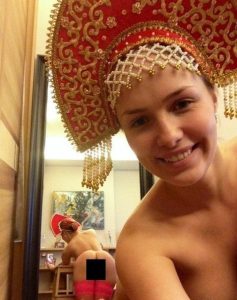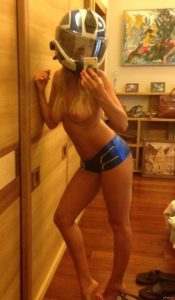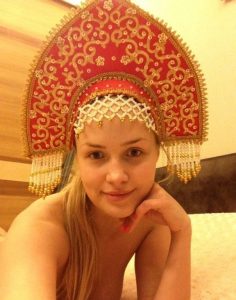One of the most difficult things about starting a sweater brand is the high MOQ (minimum order quantity). FYI, generally, sweater MOQs are in the hundreds, but a few knitwear manufacturing suppliers will go as low as 50 pieces per style per color. Which, I get, can still feel kind of high for a startup brand. But, don’t give up; there are a few hacks, like using hacci fabric, that can help decrease your order size and still keep your costs low.
Today, I am going to walk you through 3 different types of sweater manufacturing, to help you decide which is right for you and your brand.
This is important because sweater supply chain is highly specialized. Before you can reach out to suppliers, you need to know what type of sweater you want.
BUT BEFORE WE GET STARTED…
I love helping startup brand founders succeed, so I created a bunch of free guides that will help you with your business.
They won’t be free forever, so make sure to grab them while you can.
WHAT YOU WILL LEARN…
SHORT ON TIME? CLICK THROUGH THIS 60 SECOND SLIDE RECAP
WHY I LOVE TEACHING PEOPLE ABOUT KNITWEAR MANUFACTURING AND SWEATERS

Why do I love teaching people about sweaters? Take a walk down memory lane with me. I was still just a student at The Fashion Institute of Technology (FIT) studying Textile Development. Like many college kids, my friends and I spent more time in bars than in class (Hey, I’m a wild child (Labyrinth reference)! What can I say?). And like in any bar scene, we spent quite a bit of time chatting with strangers. The conversations went a little like this (I promise this is relevant to making clothes):
Them – What do you do?
Us – We’re in school for manufacturing.
Them – What?
Us – Like, how to make clothing.
Them – (without fail, literally 99 times out of 100 – if I had a dollar for every time someone asked me this, I would probably be retired), oh cool, can you knit me a sweater?
Us – Ummm, that’s not how clothing manufacturers work
From the multitude of groundhog-day-like bar conversations, I realized just how little people knew about how clothes were made. It blew my mind that some people thought that all clothes were made by people sitting in a chair, knitting. So, this post will teach you all about actual sweater manufacturing. And, this topic will always have a special place in my heart.
HAND KNITTING VS MACHINE KNITTING

Sweaters are made directly from yarns (we get to skip the fabric step with knitwear manufacturing, but more on that in a little bit), and there are two different ways of making them: by hand or by machines – welcome to the future. I’ll teach you about both!
WHAT IS HAND KNITTING?
Hand-knitting is exactly what the bar folk were thinking; two needles and a ball of yarn (rocking chair not included). Each garment is hand-made by one person. And is generally under the ethical fashion cateogry of artisan custom clothing.
With hand knitting, we rely on the skills of artisans. The labor-intensive work requires a large team of people.
WHAT IS MACHINE KNITTING?
Full fashion machine knitting, on the other hand, starts with a computer program. Basically, you can design a sweater from special software, press a button, and the machine gets to work with entire jumpers popping out at the end. It’s like living in the Jetsons.
Compared to hand knitting, a lot fewer people are needed to create the sweaters because the machines are doing most of the work. Generally, a company will only have 1-2 people programming them.
Pro tip. Complicated patterns that take people a really long time to hand knit, like tailored, knit jacquard pieces are especially great products for machines to do.
A THIRD TYPE OF SWEATER FEW PEOPLE KNOW ABOUT
Hacci sweater knits.
So, what is hacci fabric?
This is it. The big secret. This is my absolute favorite hack to help small brands PRODUCE custom sweaters. Hacci fabrics. Not to be confused with other knit fabrics like jerseys, or french terry fabric.
Brushed hacci sweater fabric is a type of fabric that looks like a sweater knit fabric. The fabric can then be cut and sewn and made into a garment.
These textiles basically sit between the worlds of knitwear manufacturing and traditional cut+sew. Instead of going from yarn straight to garment like other sweaters, hacci sweaters need to go though the cutting, sewing, and finishing process.
And, as you will see in just a minute are a great hack to getting lower prices and lower MOQs.
PROS AND CONS OF DIFFERENT KNITWEAR MANUFACTURING TECHNIQUES

PROS OF HAND KNITTING
- Artisanal. Custom knit sweaters are 100% made by people. This means that each sweater is a little bit different and unique. Not only does the product feel one of a kind and special. But usually, hand-knit sweaters are sold by types of programs that help people. There are quite a few NGOs (non-governmental organizations, or international charities) and groups that help different at-risk communities find work knitting. (want to learn more about a few of these programs – scroll down to the bottom of the post.)
- Low MOQs (minimum order quantities). It is possible to make as little as 1 garment. All you need to do is hire one artisan to knit it.
CONS OF HAND KNITTING
- Slow production. Because people make the garments, the process is much slower than an automated machine. Also, many of the groups that do this type of work tend not to do it full-time, so production times can be hard to track.
- Aging labor pool. The artisans that do this type of work tend to be much older. And finding workers to replace this aging population is difficult because young people today want to be TikTok famous, not work in a knitwear factory setting.
- Expensive. Like many other manufacturing options, time is money. Generally, the longer something takes to make, the more expensive it is. Hand-knitting is an extremely slow process.
PROS OF MACHINE KNITTING
A quick personal story.
These machines are super cool, and as part of the textile curriculum at FIT, we had to learn how to program them ourselves. Cue a flashback of me spending hours of my life down in the basement of FIT (we used to call it the textile casino, because there were no windows or clocks), learning how to create knitting computer programs.
- Set it and forget it. Just like 3-D printing, once the samples are approved, and the program is set, you can make as many sweaters as you want with very little effort or (wo)man power.
- Good bulk prices. Because bulk production is so automated and requires minimal manpower, large bulk orders tend to have competitive pricing.
CONS OF MACHINE KNITTING
- Sampling can be expensive. Although you can get a good rate for bulk orders, what tends to be expensive is the hiring of the engineers necessary to program the machines. Because the costs of labor are so high, development for these types of knit sweaters tends to be higher than other manufacturing options.
- Larger MOQ. MOQs usually start with about a few hundred pieces. While it is possible to press knit only once and get one sweater, it would not be economical. A lot of time is taken to program, sample, and tweak the computer program. Once all of that work is done, factories want to make sure the machine can run on autopilot for a while.
Sit tight, I am going to get into the pros and cons of using hacci knit fabric at the end of the article in the price savings section.
BENEFITS OF A KNITWEAR MANUFACTURING SUPPLY CHAIN

So, what happens in sweater production is that when the yarns are knit, instead of being knit into a flat piece of fabric (to then be cut and sewn), they are actually knit into the shape of a garment directly. It’s important to note that this is only possible with knitting. Woven fabrics (like the ones found in button-down shirts, jeans, etc.) are always cut and sewn.
If you have been reading the blog for a while, you might remember there are 5 levels in the garment supply chain:
- Fiber
- Yarns
- Fabric
- Dyeing/printing
- Garment cut + sew
But, as I just mentioned, the only exception to this rule is when making a sweater. You can cut out the fabric, step making your supply chain only 4 levels.
And, being able to go directly from yarns to garment is good for 2 reasons.
The first is traceability. Traceability is being able to track where everything comes from in all of the stages of the supply chain. The fewer stages in the supply chain, the less to keep track of and audit. Basically less work.
The second benefit is reduced carbon emissions. Very few suppliers in fashion are vertical, meaning very few suppliers conduct all 5 levels of the supply chain under one roof. What typically happens is that the fibers and yarns are produced in one country, and are then shipped to another country to be made into fabric. The apparel fabrics are then sent to a third country to be cut and sewn into a garment. And, lastly the garment is shipped to a forth location to actually be sold to customers. By being able to cut out an entire level of the supply chain, a whole lot of transportation can be avoided, reducing supply chain emissions.
HOW TO DECREASE YOUR SWEATER MANUFACTURING MOQ AND COST

You can take the girl out of the Walmart supply chain, but you can’t take the Walmart cost savings hacks out of the girl.
A big part of my job, when I worked in fast fashion, was figuring out ways to chop down the price of our products without degrading their performance of the product. Basically, mission impossible.
One of the most difficult things about starting a sweater brand is the high MOQ. Generally, sweater MOQs are generally at least 100 pieces per style per color. Which, I get, can still feel kind of high for a startup brand. But, don’t give up.
There are a few things I have in my bag of manufacturing cost savings tricks that can help decrease your order size and still keep your costs low.
To make lower MOQs and still keep manufacturing costs affordable, there are 4 things to consider: hacci fabrics, blended yarns, fabric weight, and colors. These are the good tricks most sweaters manufacturers won’t share.
HACCI FABRICS
Cut and sew manufacturing using Hacci fabric tends to have a much lower MOQs than machine knitting. It requires no special machinery or training. And it is much cheaper than a hand knit or full fashion knit even though there is an extra level in the supply chain.
The only drawback is that after sewing the garment, the seams tend to be quite heavy. But most people don’t notice, and this does not seem to take away from the customer experience.
BLENDED YARNS
The average consumer can’t tell the difference between 100% merino wool, and a wool acrylic (cheaper than wool) blend. Actually, sometimes they even think that the wool/acyclic blend feels more like a luxury knit sweater!
What they can feel is a low-quality wool yarn that feels itchy and scratchy. So, instead of going for that 100% wool label and compromising the quality of wool fibers, opt for a blend.
Cost-effective fibers to consider for this hack are cotton, acrylic, and nylon.
The other nice thing about sweaters is that you can skip the spandex. Generally, sweater constructions naturally have a lot of stretch, so you don’t need elastic added to them. And, because elastic is one of the most expensive fibers around, this helps to reduce the price.
FABRIC WEIGHT
The lighter the fabric, the less fiber resources, and the more money you can save. Now, there comes a point where a fabric becomes too thin and feels cheap. But, usually, it is possible to decrease the weight a little bit to save some money without anyone really noticing.
COLORS
Instead of using custom-dyed colors, use stock yarns from your knitwear manufacturing partner. The process of lab dips and dying custom colors is not just expensive, but it is also time-consuming. By using the yarn colors factories have available (and some factories have up to 30- 50 options to choose from), you can get your production cheaper and faster.
MY FAVORITE KNITWEAR MANUFACTURING SUPPLIERS

Are you a designer who needs help getting your sweaters made, and tired of googling for things like sweater manufacturers near me, with no restults?
Here are a few of the best sweater manufacturers around!
HANDKNIT SUPPLIERS, FOR CUSTOM MADE KNITWEAR
- KOCO Knit – Indian artisan knitwear manufacturing, “KOCO was established in Australia by Danielle Chiel in partnership with women who live in rural villages of Tamil Nadu, southern India. What began as a solution to producing hand-knitted garments offshore is now a sisterhood of artisans and a business with the United Nations Global Goals for Sustainable Development entwined in our DNA. We have scaled the art of hand knitting to produce commercial quantities of garments, all entirely hand knitted.”
- Knitlab Peru – Move over cashmere sweaters, I am obsessed with sustainable alpaca these days. “Our practice involves working with knitting artisans that have formally set up their own small businesses and communities. Each leader, in turn, has their own group of knitters or a workshop.”
MACHINE KNIT SUPPLIERS
- Shima – “Always at the forefront of knitting technology, SHIMA SEIKI computerized flat knitting machines are the global standard of the industry.”
- Stoll M1 – “Nowadays, knitting companies are facing an increasing pressure trying to cover the wide product range requirements and needs of their customers and to produce more economically at the same time. Customers, on the other hand, expect constant ability to deliver knit products, with an increasingly changing assortment and a decreasing order volume for each item.” Stoll provides these much-needed solutions. And, in NYC, they have a showroom open to the public where you can view the machines in action!
HACCI FABRIC SUPPLIERS
- SwatchOn – a super easy platform, with unbeatable low MOQ wholesale prices. And, over 200,000 fabrics to choose from! They even have hard-to-find rib hacci sweater fabrics. Plus, they have amazing customer service!
- Fabric Wholesale Direct – Another global, online option, with great prices, and even better reviews – with a seemingly never-ending selection of fabric types. And, you can buy as little as one fabric yard!
WANT ACCESS TO MY LIST OF OVER 500 SUPPLIERS?
Check out The Sourcing Bootcamp, and my other private consultancy services!
WHAT DO YOU THINK?
What type of knitted garment are you going to make – hand, machine, or hacci? Let me know in the comments!
Answer Hacci fabric is a type of textile that looks like a sweater. It can be cut + sewn to make garments that look like sweaters for a fraction of the price of traditional sweater manufacturing. Question #5 What does hacci fabric feel like? Answer Hacci fabric feels and looks like a sweater. Schema.org’s references: FAQPage Google’s documentation: FAQ Page




КОММЕНТЫ